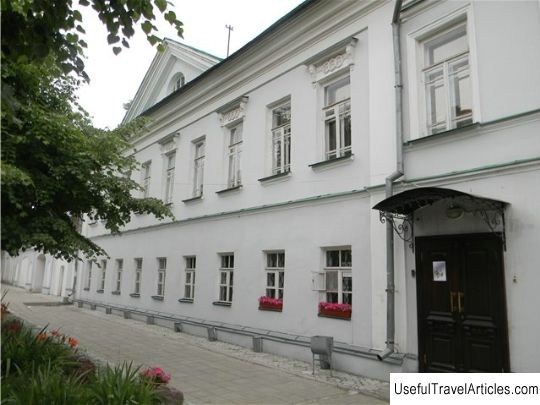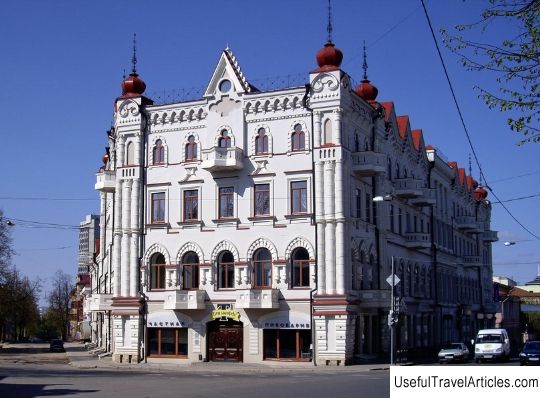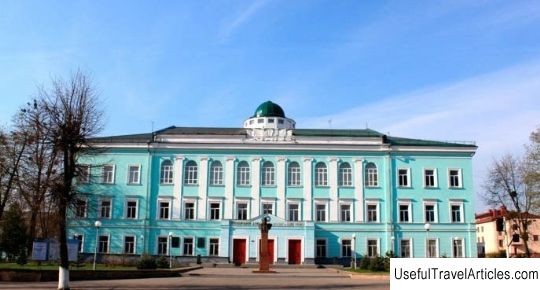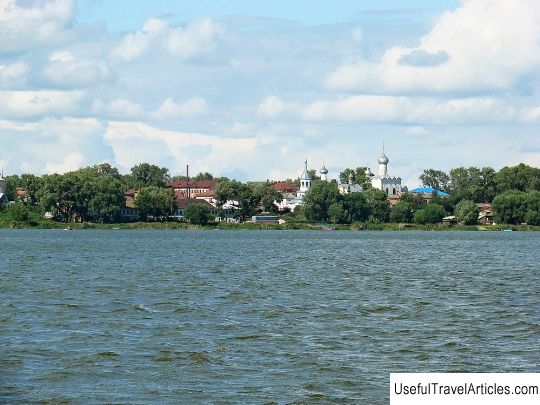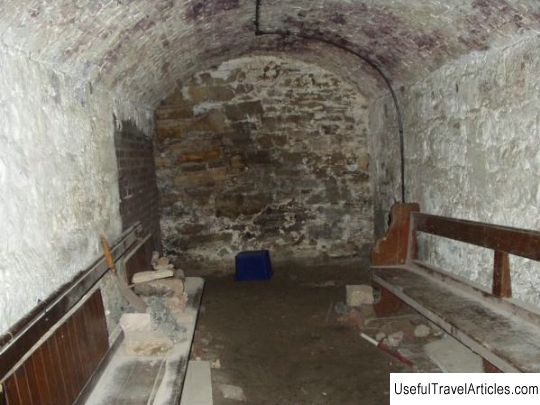Gymnasium building description and photos - Russia - Golden Ring: Rostov Veliky
Rating: 7,8/10 (354 votes) 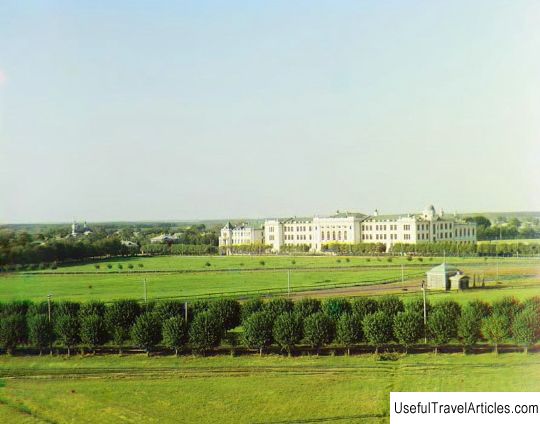
Gymnasium building description and photos - Russia - Golden Ring: Rostov the Great. Detailed information about the attraction. Description, photos and a map showing the nearest significant objects. Photo and descriptionGymnasium in Rostov was founded in 1907. It bears the name of its founder, merchant Alexey Leontievich Kekin, who was an honorary citizen of the city. In Soviet times, this was somewhat forgotten, but today the gymnasium again received the name of the famous philanthropist - this is evidenced by the gilded inscription adorning the facade of the building. Personal life of A.L. Kekin. developed quite tragically: his second son, Fyodor, died in infancy, and soon after that the wife of Alexei Leontievich died. In 1885, on the way to university, at the age of twenty, Kekin's son, Maximilian, suddenly died. After his death, A.L. Kekin left no direct heirs. Less than a month after the death of Maximilian, Kekin decides to draw up a will, according to which he transferred all his immovable and movable property to the city. One of the points of the will is to establish a gymnasium in Rostov and, if possible, a university. A competition was announced in the Moscow Architectural Society to develop a project for a Rostov gymnasium. The winner of the competition was the Moscow artist and architect, Pavel Alekseevich Trubnikov. On June 22, 1908, the ceremonial foundation of the gymnasium took place. After the moleben was served, a copper plaque with an engraved commemorative inscription about this day was laid in the foundation of the building. The building of the gymnasium was built in 1910 The building of the gymnasium turned out to be truly magnificent: both outside and inside. The spacious building is made in the neoclassical style and looks impressive in Moscow: its front facade is decorated with massive columns and statues in niches. The building of the gymnasium is elongated and has three floors. One wing is connected to the main building by a gallery. In the southern part of the gymnasium, most likely, there was a house church. The building is surrounded by a fence with massive gates. The gymnasium has spacious classrooms, a small tower houses an educational observatory. The prim facade of the main academic building is softened by the calm architectural forms of the neighboring building, which was originally intended for the headmaster of the gymnasium and its teachers. The first two gymnasium classes were opened in September 1907, since the gymnasium building was not yet built, they were accommodated in the house of OM Malgina. on Zarovskaya street. When the construction was completed, the building of the gymnasium housed a men's classical eight-grade gymnasium. The set of academic subjects differed from the modern one in the presence of such disciplines, like the Law of God, logic, Latin. Arithmetic, geometry, algebra were not separated into separate subjects, they were combined under the name of mathematics. Education was paid then. The payment was 50 rubles a year, for Rostovites 20 rubles of this amount was paid by the city. On the recommendation of the director, the poor were exempted from paying. The first director of the Rostov gymnasium was Sergei Pavlovich Moravsky, a graduate of Moscow University, teacher and historian, his name today is the street on which the gymnasium stands. Like the architect, the headmaster of the gymnasium was chosen on a competitive basis. The flourishing of the gymnasium is associated with the name of Moravsky: Sergei Pavlovich paid great attention to the selection of personnel for the gymnasium, a rational schedule of classes, which contributed to the fact that so that students do not overwork and assimilate the material as fully as possible. Even on weekends, the gymnasium was not closed - various circles operated in it, and self-education and creativity were encouraged in every possible way. The "Society for the Aid to the former pupils of the Rostov gymnasium" was founded, which provided support to the graduates of the gymnasium in the first steps of their independent life. The Rostov gymnasium was a public institution for pupils of all religions and estates. After the revolution, the gymnasium was transformed into a unified labor school of the second level No. 2, its head was S.P. Moravian. Nowadays, the school has again returned to the status of a gymnasium, it is considered the best Rostov educational institution.      We also recommend reading Fountain ”Robinson, Friday and the Dog” description and photo - Russia - Ural: Tobolsk Topic: Gymnasium building description and photos - Russia - Golden Ring: Rostov Veliky. |
